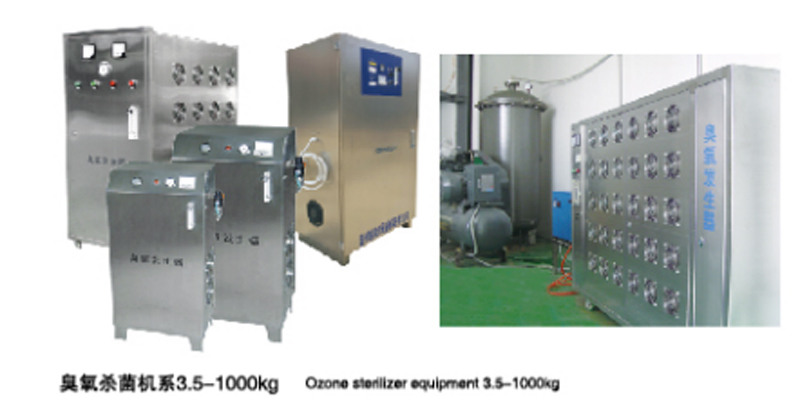The principle of ozone treatment of wastewater:
Ozone has a very strong oxidation ability. In wastewater treatment, the strong oxidation ability of ozone is used. After treatment with ozone, there is no secondary pollution or toxic by-products. The reaction between ozone and wastewater is extremely complex and involves the following processes: first, ozone gas molecules diffuse from the gas phase to the interfacial region. Then, when the concentrations of the reactants in the two phases reach an approximate level at the interface, they present a state of physical equilibrium; thereafter, ozone will diffuse from the interfacial region to the liquid phase and undergo a chemical reaction.

Diffusion of reaction products is initiated based on the concentration gradient. Under various biochemical and physicochemical actions, ozone can transform high-molecular-weight organic matter in wastewater into low-molecular-weight substances and transform non-reactive substances into reactive substances. Therefore, ozone does not significantly reduce the organic matter in wastewater, but can utilize its strong oxidation ability to change the structure and properties of organic pollutants, and transform difficult-to-degrade or long-degrading organic matter into small-molecule substances easily oxidizable.
The principle of ozone treatment of wastewater mainly relies on ozone molecules and the hydroxyl radicals produced in its aqueous phase to degrade aromatic compounds such as phenol, toluene, and benzene. The treatment process can be achieved by two pathways.
The first pathway is direct oxidation. Due to its nucleophilic and electrophilic properties, ozone can easily react with organic matter in wastewater, attacking the functional groups of pollutants such as phenols and anilines, and producing biodegradable acids.
The second pathway involves the catalytic generation of hydroxyl radicals from O3 molecules, initiating a chain reaction that indirectly achieves oxidation and degradation of various types of organic pollutants, achieving industrial wastewater treatment.
Based on past studies, ozone treatment mainly relies on ozone molecules and the hydroxyl radicals produced in its aqueous phase to degrade aromatic compounds such as phenol, toluene, and benzene. Therefore, two pathways of treatment exist: direct oxidation, which takes advantage of the nucleophilic and electrophilic properties of ozone to initiate a reaction with pollutants and produce biodegradable acids, and indirect oxidation, which involves the catalytic generation of hydroxyl radicals from O3 molecules to oxidize and reduce the size of organic pollutants, achieving effective treatment of industrial wastewater.
The specific applications of ozone generators in wastewater treatment include various branches of wastewater treatment such as domestic sewage, sewage treatment plants, industrial wastewater, organic wastewater, textile printing and dyeing wastewater, medical wastewater, aquaculture wastewater, phenol-containing wastewater, papermaking wastewater, tanning wastewater, food factory wastewater, pharmaceutical factory wastewater, etc.
In the field of water quality treatment, ozone generators can also be used for the treatment of purified water, tap water treatment plants, beverage factories, drinking water, mineral water, processed water for food factories, hospital water, well water, surface water, secondary water supply, and recycled water.
Post time: Aug-01-2023

